The Innovators: Stax Artist Spotlights
Johnnie Taylor

Photo by Bill Carrier, courtesy of the Stax Archive.
Known as “The Philosopher of Soul,” Johnnie Taylor (1934–2000) was a versatile and charismatic singer, who combined the sweetness of gospel with the grittiness of blues. In the ’60s and ’70s, the prolific artist delivered hit after hit—including the first-ever platinum-certified single—and was instrumental in revitalizing Stax when it became an independent entity.
Born just outside of Memphis, in Crawfordsville, AR, Taylor began singing in church as a child, graduating to gospel groups as a teenager. With his smooth vocals, Taylor rose quickly, performing in the ’50s with such legendary groups as the Highway QCs and The Soul Stirrers—the latter of which found him replacing his friend Sam Cooke on lead vocals.
But Taylor also had dreams of a solo career and yearned to broaden his audience base outside of the gospel circuit. With the encouragement of Cooke, he followed in his friend’s footsteps, pursuing a secular career and signing to the soul star’s label, SAR Records. While the early ’60s found Taylor establishing his sound and releasing a handful of singles (including “Rome Wasn’t Built in a Day”), the excitement was cut short with Cooke’s shocking murder in 1964.
Picking up the pieces, Taylor returned to Memphis, where Stax Records was eager to sign the talented artist. It was 1966 and the label was flourishing, thanks to stars like Carla Thomas, Otis Redding, and Sam & Dave. Taylor proved himself immediately, releasing a string of Top 40 R&B singles during his first year at the label.
But Stax was about to undergo a challenging period. In 1968, the soul label was still reeling from the tragic death of its biggest star, Otis Redding, when its distribution deal with industry heavyweight, Atlantic Records, ended. With the split, many of Stax’s biggest acts were now tied exclusively to the major label. Suddenly, Stax was an independent entity without any big stars.
Taylor, however, was still a Stax artist, and he delivered his first No.1 R&B hit in the nick of time. Released in the fall of 1968, “Who’s Making Love” not only became a signature track for Taylor but also marked the label’s highest-selling single to date. The song landed in the Billboard Hot 100’s Top 5, earning the singer his first gold record and his first GRAMMY® nomination. By 1969, things were looking bright for Stax and Johnnie Taylor, who was leading the label’s next generation of stars.

Photo by (c) Bill Carrier, courtesy of the Stax Archive.
When it came to his music, Taylor worked regularly with several of the in-house writers at the label, including Bettye Crutcher, Homer Banks, and Raymond Jackson (who together made up the “We Three” songwriting team). Taylor also formed a particularly fruitful creative partnership with the Detroit-based producer and songwriter, Don Davis, who joined Stax in the late ’60s. Beginning with “Who’s Making Love,” which Davis produced, the two men worked on a string of successful singles, including the Top 10 R&B hits “Take Care of Your Homework” and “Testify (I Wanna).” In the early ’70s, they topped the R&B charts with “Jody’s Got Your Girl and Gone” (1970) and “I Believe in You (You Believe in Me)” (1973).
Taylor wasn’t just focused on singles, though. During his time at Stax, the balladeer released eight studio albums, including the Top 10 R&B sellers Who’s Making Love…(1968), One Step Beyond (1970), and Taylored in Silk (1973).
Although Stax closed its doors in 1975, Taylor continued to find success, scoring the biggest hit of his career with “Disco Lady” a year later. The soulful dance track spent four weeks at the top of the Billboard Hot 100 and—in a remarkable feat—became the first single to be certified platinum by the RIAA.
In addition to releasing nearly 30 albums over his four-decade-long career, Taylor was also a savvy businessman, who oversaw the majority of his contracts—a practice that was unheard of at the time for an artist of his level. Perhaps it was that fiercely independent spirit that kept Taylor active in the studio and on the road throughout his life.
In his later years, Taylor recorded one of his most popular titles, Good Love!, which topped Billboard’s Blues chart and landed in the R&B Top 15. In 1999, meanwhile, the three-time GRAMMY® nominee was honored by the Rhythm & Blues Foundation with their prestigious Pioneer Award. That same year, months before his death, he released his final song, “Soul Heaven,” in which he dreamed of seeing all of the great artists alive again in one incredible concert—including Sam Cooke, Jimi Hendrix, and Louis Armstrong. It’s safe to say that if such a place does exist, Taylor is certainly front and center on that stage.
Stax Fax
- While Taylor began his career as a gospel singer, he also set his sights on becoming a preacher. In the late ’50s, while still a member of the Soul Stirrers, Taylor was ordained as a minister, and briefly took on the role full-time before Sam Cooke urged him to pursue a career in secular music.
- After the release of “Who’s Making Love,” Taylor had become such a big star that he was invited to perform at President Nixon’s 1969 inaugural ball. Taylor was in good company, following the likes of James Brown, Tony Bennett, and Dinah Shore, who all sang at the inaugural ceremony earlier in the day.
Essential Tracks
Who's Making Love
I Believe in You (You Believe in Me)
Disco Lady
READ MORE
“Soul Survivor” | Texas Monthly, 1998
“‘Who’s Making Love’: The Johnnie Taylor Classic That Updated Stax In ’68” | uDiscoverMusic, 2020
The Innovators: Stax Artist Spotlights ARCHIVE
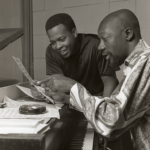
Stax Records — After 1975
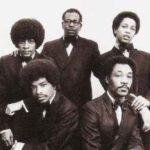
Ollie & The Nightingales
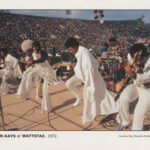
The Bar-Kays

24-Carat Black

The Temprees
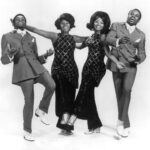
The Soul Children

The Mar-Keys

Delaney & Bonnie

Stax Groups – The Astors, Jeanne & The Darlings & the Charmels

The Mad Lads
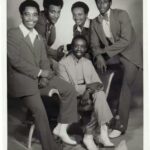
The Dramatics

The Emotions

Johnnie Taylor
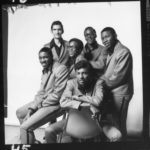
The Bar-Kays

Otis Redding

The Dramatics
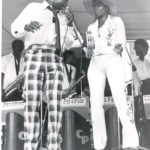
RUFUS & CARLA THOMAS
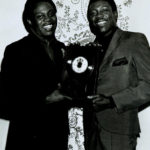
Sam & Dave

The Emotions


